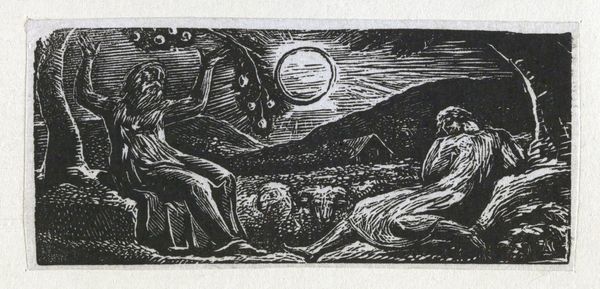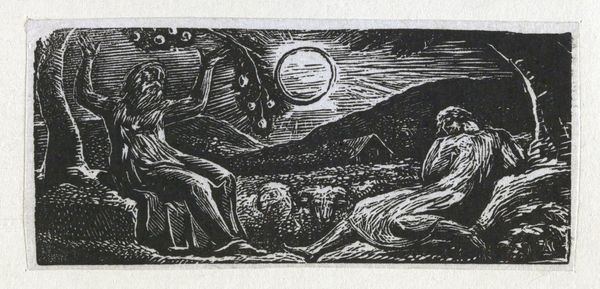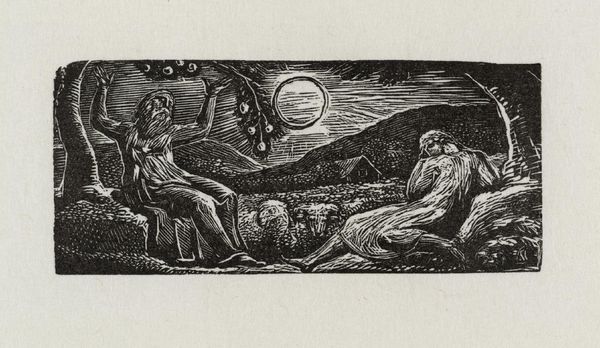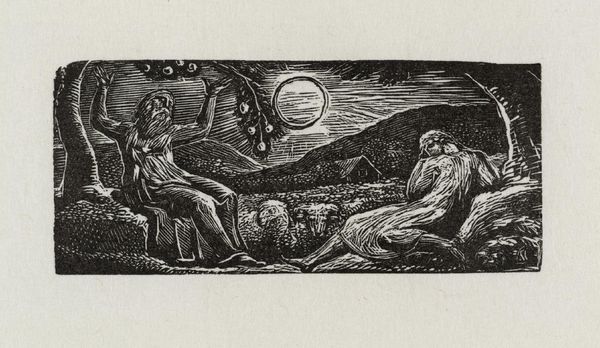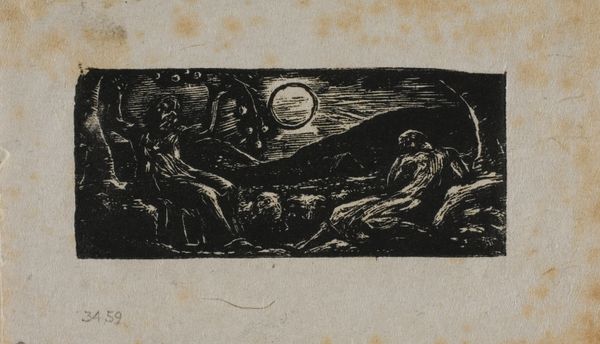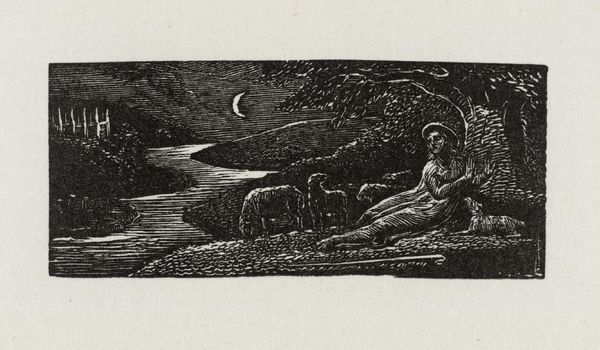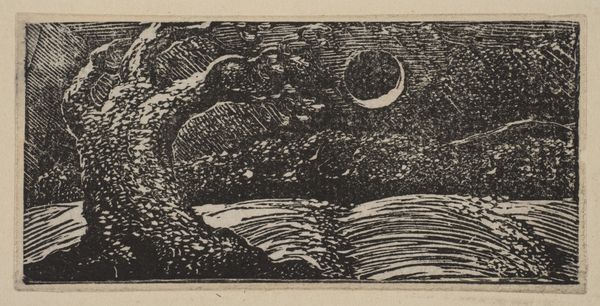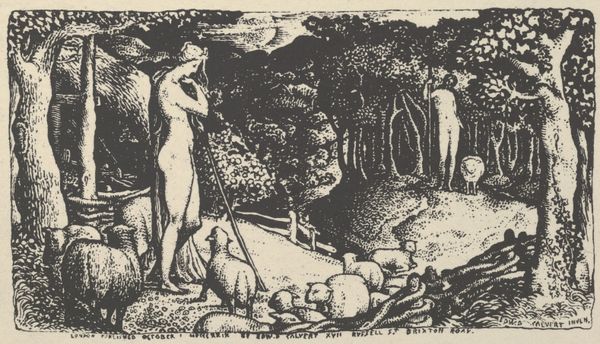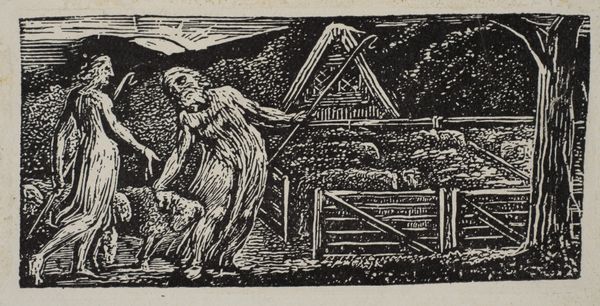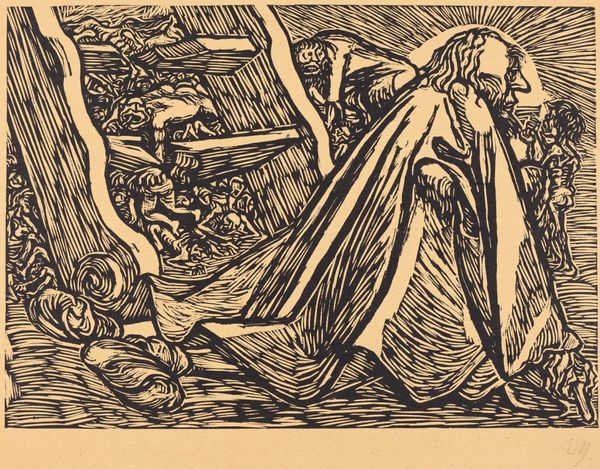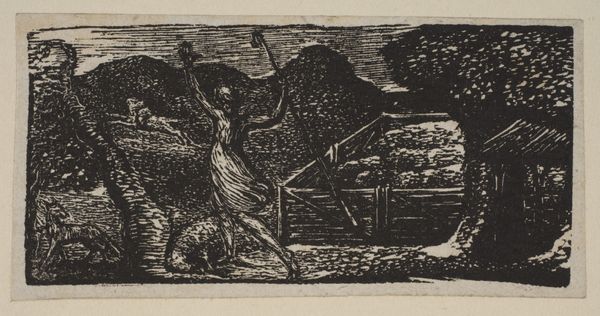
Thenot Under a Fruit Tree, from Thornton's "Pastorals of Virgil" 1821
0:00
0:00
drawing, print, woodcut
#
tree
#
drawing
# print
#
landscape
#
figuration
#
fruit
#
woodcut
#
men
Dimensions: block: 1 5/16 x 3 in. (3.3 x 7.6 cm)
Copyright: Public Domain
Curator: We are looking at William Blake's woodcut, "Thenot Under a Fruit Tree, from Thornton's 'Pastorals of Virgil,'" created in 1821. It's currently held at the Metropolitan Museum of Art. Editor: My first impression is of the striking contrasts and the intense, almost spiritual, quiet of the scene. The limited palette elevates the emotional tenor—making me focus on the figures. Curator: Indeed. The stark black and white create an otherworldly feel, typical of Blake's visionary aesthetic. Note the symbolic density—the fruit, the rising sun, the poses of the figures themselves. These echo classical and Christian ideals. Editor: Let's consider Blake’s process for a moment. A woodcut—especially one as detailed as this—involved considerable labor. The tools, the wood, and the act of carving would require both precision and brute force. It speaks of tangible interaction and the effort embedded in the art. Curator: Yes, the very nature of the medium brings its own unique symbolism, harking back to the craft guilds of an earlier time. For me, the figures themselves, so deeply embedded in the landscape, evoke the interplay between mankind and the pastoral world—an idea at the core of Virgil’s poems. It makes one consider how human actions, like labor, might shape this relationship. Editor: Absolutely. This engagement with the land via his making method seems fundamental. We also have to remember who this was intended for—Dr. Thornton’s students, for whom the book was commissioned. The image works as instruction but also a testament to Blake’s radical vision and beliefs about artistic production. Curator: Agreed, Thornton aimed the pastoral illustrations at children to spark their imaginations with simpler forms. But Blake clearly had other aims. To me the pastoral landscape signifies so much more than simple joy. It represents innocence threatened by experience—the figures a microcosm of universal themes. Editor: Well, that changes my earlier opinion. Thinking about how he worked the materials helps make visible some of the deeper meaning—making it both simple and complex. Curator: Ultimately, this print underscores how images, both in their production and visual language, embody multilayered narratives, inviting interpretation across time. Editor: For me, seeing this piece, learning about Blake's working methods, is an excellent reminder that even works that look effortless can hold deep layers of meaning related to tangible reality and the way people materially construct artwork and art history.
Comments
No comments
Be the first to comment and join the conversation on the ultimate creative platform.
